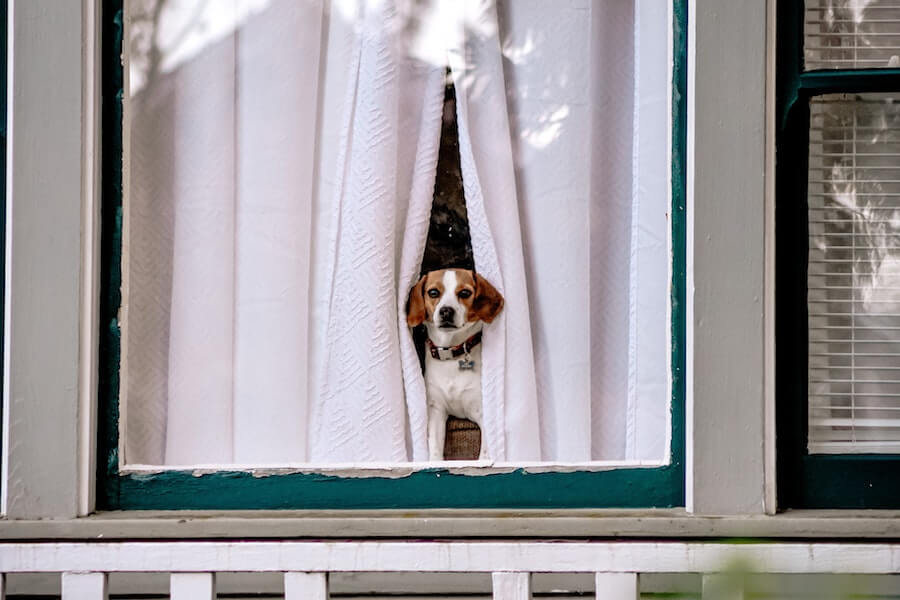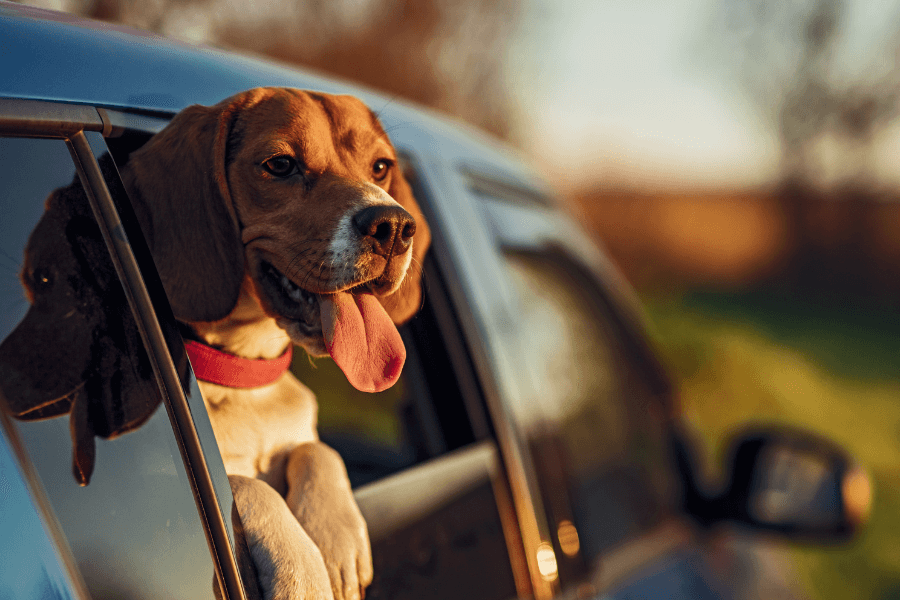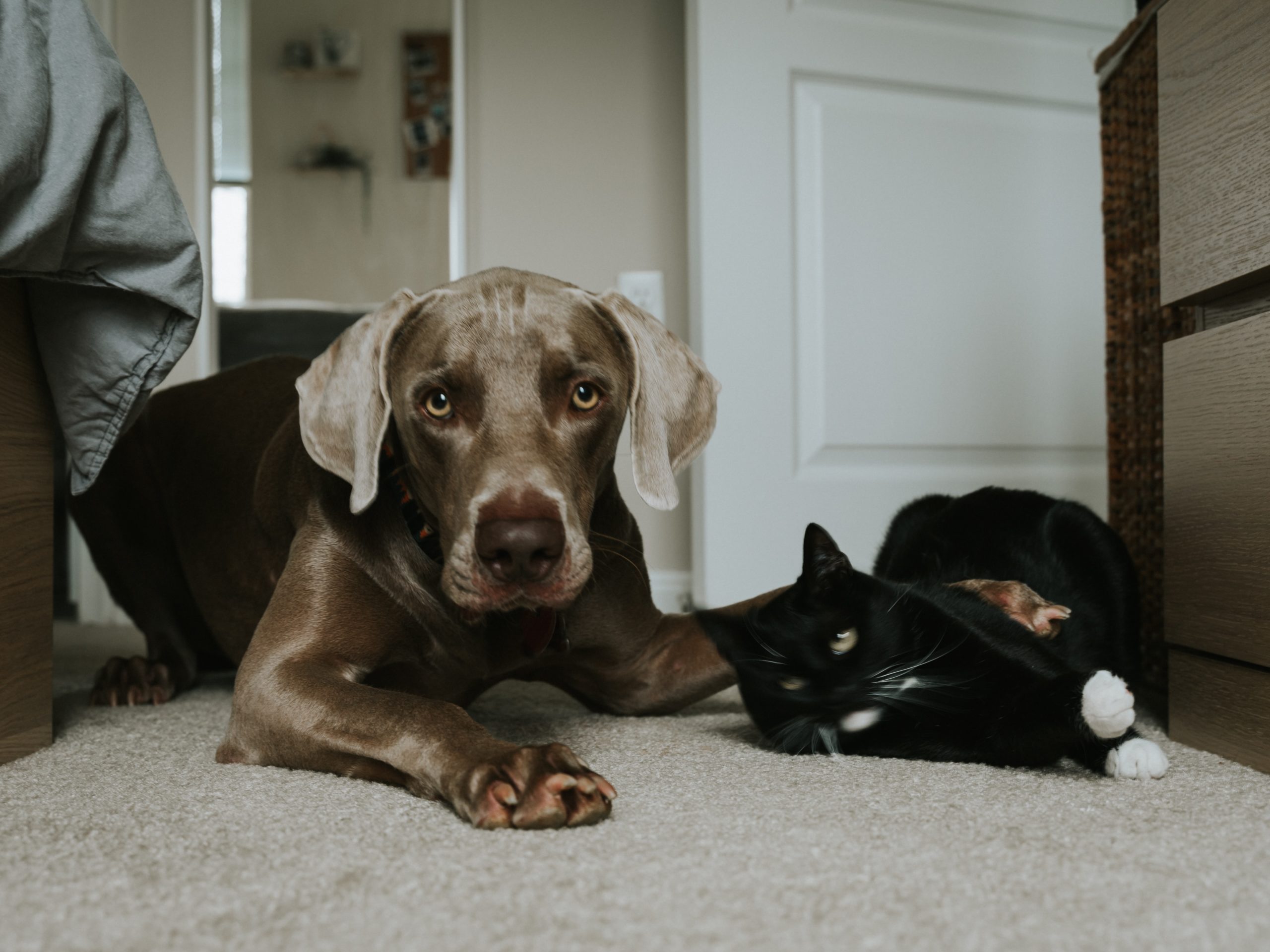Many dogs suffer from separation anxiety. Separation anxiety in dogs can arise for a variety of reasons, and there is a range of solutions.
As owners return to work after being at home for months as a result of the COVID-19 pandemic, separation anxiety in dogs may be on the rise, and it is important to know how to recognise and respond to it.

Let’s take a look at the symptoms of separation anxiety, various treatment options and aids, and which dogs are most and least prone to developing separation anxiety. This struggle can be frustrating and heartbreaking for owners, but don’t lose hope! You’ve come to the right place.
Topics in this article:
What is dog separation anxiety?
Separation anxiety in dogs is common. When their owner leaves, a dog may feel overwhelming stress, confusion, and anxiety or fear that their owner is never coming back. These feelings result in negative behaviours like excessive chewing, scratching, digging, vocalising, or using the bathroom indoors.
Why do dogs have separation anxiety?
Some dogs may have trauma in their past that triggers anxiety when their owner leaves. Changes in routine, moving house, household members or diet can also spark separation anxiety. If an owner’s schedule is sporadic, the dog may find it difficult to predict their return.
With a lot of dog owners working from home during COVID-19 restrictions, many dogs have become accustomed to their constant presence and may find the transition of their owners returning to full-time work difficult.
Symptoms of separation anxiety in dogs
Dogs exhibit a variety of indicators when they experience separation anxiety. They may show these symptoms as their owner leaves the house and throughout the owner’s absence.
How to know if your dog has separation anxiety?
Dogs may whine, howl or bark when they are distressed. In the case of separation anxiety, a dog may begin excessively whining as their owner prepares to leave. Vocalisations may escalate to prolonged barking and howling and may be accompanied by pacing back and forth or in a circular pattern in the owner’s absence.
A dog with separation anxiety may attempt to escape by chewing or digging at doors and windows. They may also dig or chew on furniture or other household items as a general manifestation of anxiety. These symptoms are particularly hazardous as they can lead to self-injury, including broken teeth or nails and cuts or scrapes.
Can dogs get diarrhoea from separation anxiety?
Some dogs with separation anxiety experience gastrointestinal distress leading to accidents indoors while the owner is absent. If a dog is defecating indoors while the owner is home, the problem is likely not related to separation anxiety.
How can I help my dog with separation anxiety?
Take note of any recent changes to your dog’s routine that may be the cause. If symptoms include using the bathroom inside, consult your vet to rule out any medical problems. The best way to help a dog with separation anxiety depends on multiple factors. Treating your dog’s separation anxiety will require time and patience.
Would another dog help separation anxiety?
Adding a second dog may help your dog’s separation anxiety, but is not right for all dogs. If your dog has lost a companion or has come from a foster home with multiple dogs, this change may be the source of their separation anxiety. If your dog does not regularly interact with other dogs, bring them to a dog park for supervised socialisation. If these interactions go well, your dog may benefit from a playmate. Keep in mind that adding a second dog may cause stress initially.
Dog toys to help with separation anxiety
Boredom can contribute to separation anxiety in dogs, so toys are helpful. Having something your dog can focus on besides their anxiety helps tremendously. Playing with or walking your dog before leaving the house burns excess energy. An excellent interactive puzzle toy will give your dog’s brain a superb workout, often leaving them even more exhausted than from physical activity. Dog puzzle toys are designed for you and your dog to enjoy together and will not stand up to heavy chewing, so please remember not to leave your dog alone with these toys.

Does music help with separation anxiety?
Music may soothe separation anxiety in dogs. Start to experiment by playing music for your dog while you are at home. If they appear noticeably relaxed, then music can be a valuable part of separation anxiety treatment but is not a cure for your dog’s anxiety by itself.
Will a cat help my dog’s separation anxiety?
Dogs and cats can develop positive relationships, but knowing if a cat would help your dog’s anxiety depends on the animals involved. Some cats are aloof and prefer solitude while some dog breeds view cats as prey, making for a poor match, so consider their individual personalities.
Does dog daycare help with separation anxiety?
Dog daycare may be a solution for dog separation anxiety. Daycares provide interaction, playtime, and regular toilet breaks, which can alleviate symptoms. Make sure to consider your dog’s personality as well as the facility. If your dog dislikes loud noises, they may feel more stressed in a daycare setting as they are noisy and sometimes crowded. Most daycares have a thorough intake process to determine if your dog is a good fit for the facility and the other dogs.
Do dogs grow out of separation anxiety?
If your dog develops separation anxiety because of changes to their environment or routine, they may need patience, support, and time to adjust before returning to normal. For other dogs, especially ones with past trauma, treating separation anxiety can be a long journey that requires trial and error. Each dog is different, but separation anxiety should never be punished or ignored no matter the cause.

Dog separation anxiety training
How to train your dog out of separation anxiety?
Training is an excellent tool for treating separation anxiety in dogs. Providing structure can help your dog to trust that you will return and know what to expect when you leave. Consider consulting a Certified Professional Dog Trainer or a Certified Applied Animal Behaviourist to develop a training plan.
The goal of training is to create a sense of security for your dog. The best way to crate train a dog with separation anxiety is to designate the crate as a safe space. A crate should not be used only when the dog misbehaves or while you are absent. Build a positive association by allowing free access to the crate and encouraging the dog to enter it using treats. As the dog begins to enter the crate unprompted, continue to reward them with food to strengthen the positive association.
Train your dog to do an extended stay. Once your dog is seated, reward them and slowly increase the time and distance of the stay. Eventually, begin asking your dog to stay and leave the room for one to two seconds. Increase the time, then start stepping outside briefly. Use lots of rewards as you slowly increase the amount of time you are gone.
Keep an eye out for behaviours like lip licking, yawning, panting or trembling. If your dog exhibits these stress behaviours or becomes unfocused, conclude the session. End all your training sessions on a positive note by giving your dog a simple command such as ‘sit’ or ‘come’ and offer lots of praise.
Once your dog is comfortable with extended stays, begin practising while doing pre-departure tasks like putting on your shoes or picking up keys. Take time to perform these tasks when you are not leaving the house. For example, get ready to ‘leave’ and then sit on the couch and relax. This process breaks the association between your pre-departure tasks and being left alone.
This conditioning process will take at least one to two weeks with a couple of sessions a day. During your training program, avoid leaving your dog completely alone. Take them to work, bring them to a sitter or have a friend or family member come by and keep them company.
Treating separation anxiety in older dogs
Treatment for older dogs with separation anxiety should consider any medical problems. Older dogs commonly experience impaired vision and hearing, reduced bladder and bowel control, weakened joints and dementia, which can increase their anxiety. Separation anxiety in older dogs at night may occur. Provide a comfortable place for them to sleep, such as their crate, consider putting in a nightlight, and have regular bathroom breaks. These adjustments can ease separation anxiety in older dogs.
Deaf dog separation anxiety
Deaf dogs also benefit from environmental adjustments, like providing a night light. The training techniques mentioned above can aid deaf dogs as well, as they are still heavily reliant on their noses to learn.
Separation anxiety medicine for dogs
Your veterinarian may prescribe separation anxiety medication for severe cases. Always consult your vet before administering any medication to your dog, including natural dog separation anxiety medication.
What do vets prescribe for separation anxiety?
A 2015 study suggests that a prescription of fluoxetine in conjunction with a dog separation anxiety training program can yield significant positive results. Other separation anxiety pills for dogs include Xanax, Zoloft and valium. Separation anxiety pills for dogs should only be administered when prescribed by a vet.
What natural remedy can I give my dog for separation anxiety?
Natural remedies may include playing music or running a white noise machine, using a thundershirt or incorporating calming CBD treats.
Bach flower remedies for dog separation anxiety
A blend of flower essences called Rescue Remedy, developed by Dr. Edward Bach, has anecdotal evidence for soothing dog separation anxiety. The essences may be given orally, in water or rubbed lightly on the coat and paws.
Essential oils for dog separation anxiety
Some essential oils, like lavender, have a calming effect. Use essential oils sparingly as they are very concentrated and never give them to the dog directly. Apply one or two drops on your dog’s collar or dilute the drops with coconut oil and rub a light layer on the coat.
Which dog breeds have the worst separation anxiety?
High energy dog breeds or working breeds, like huskies, border collies, or German shepherds, are prone to anxiety. Small dogs bred as companions, like toy poodles, bichon frises and Havanese dogs are also prone to bad separation anxiety.

Dog breeds less prone to separation anxiety
Dogs that are more independent and laid back are better suited to being alone. Dog breeds with low separation anxiety include basset hounds, bullmastiffs, Irish wolfhounds and chow chows. Small dogs less prone to separation anxiety include French bulldogs, chihuahuas, pugs, and Boston terriers.
Separation anxiety in dogs can be frustrating, but there are many solutions to explore, so don’t give up!





